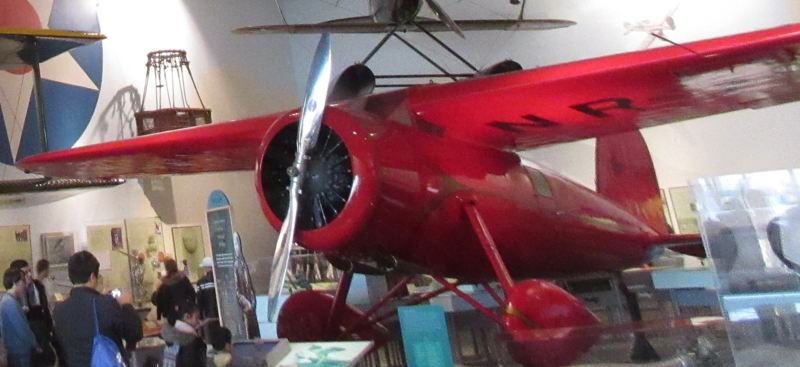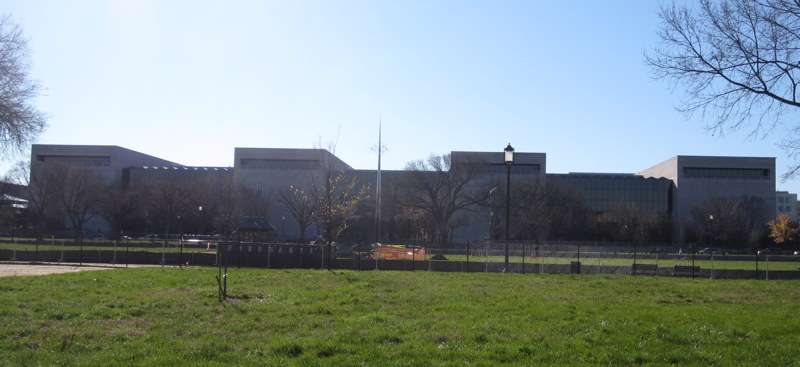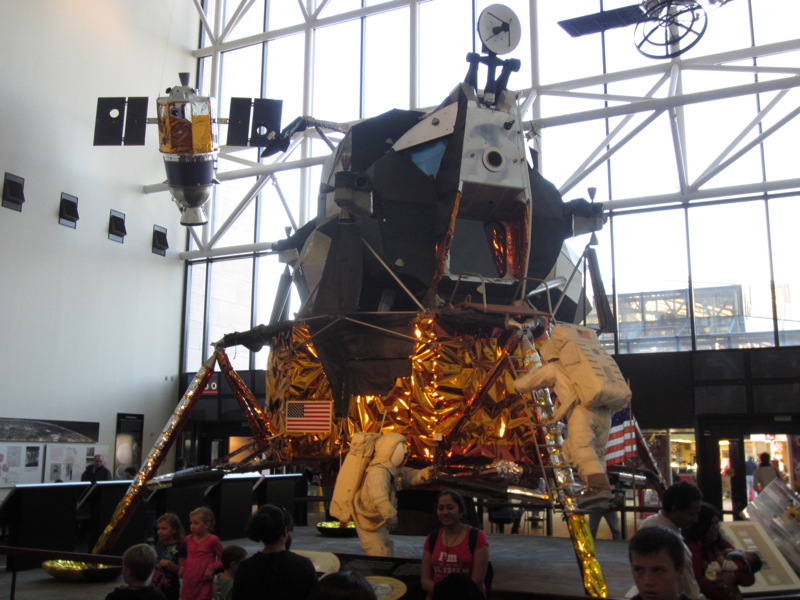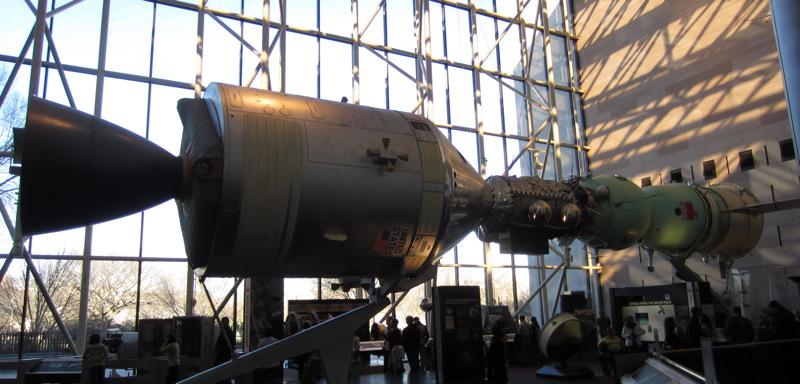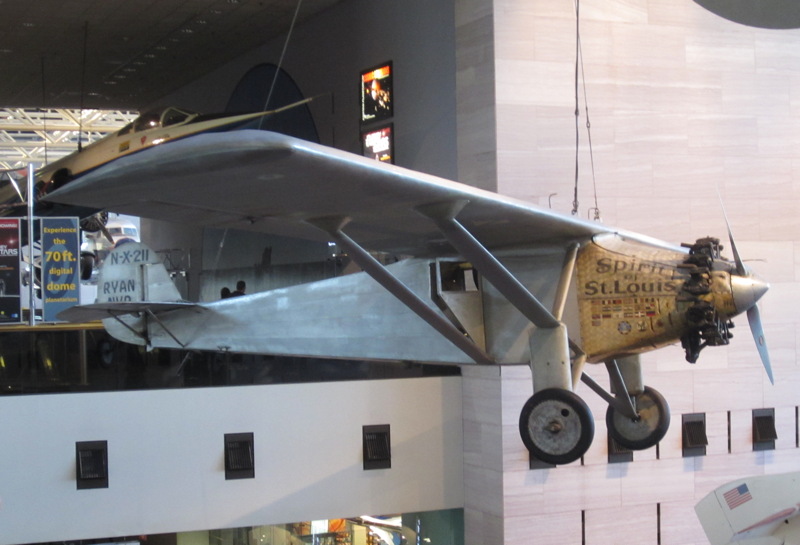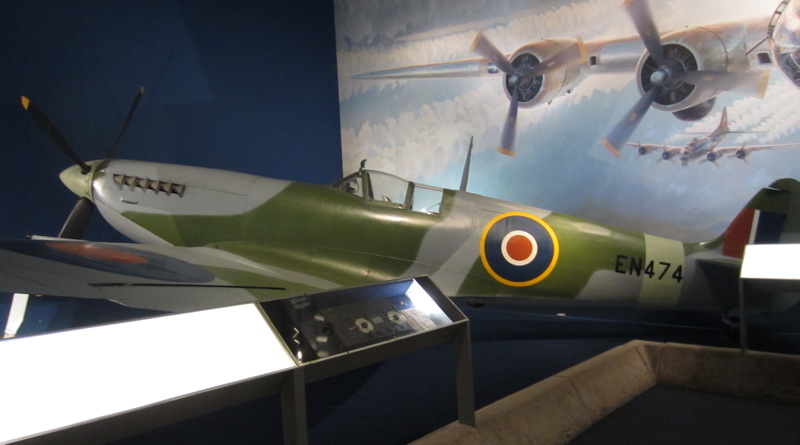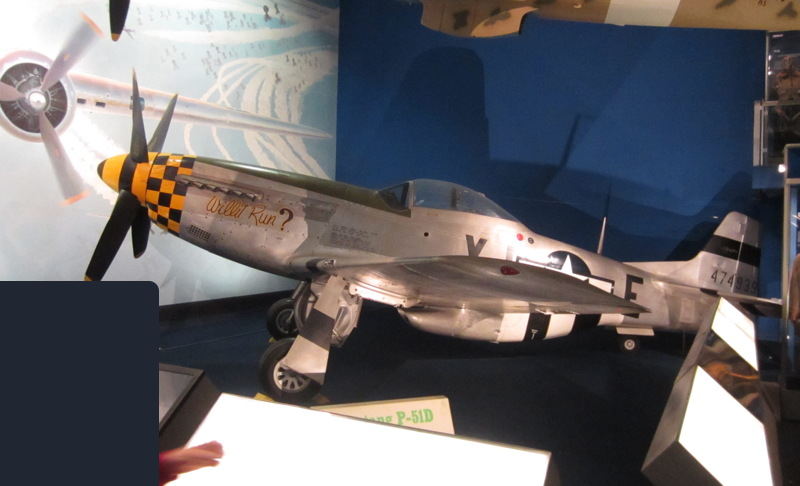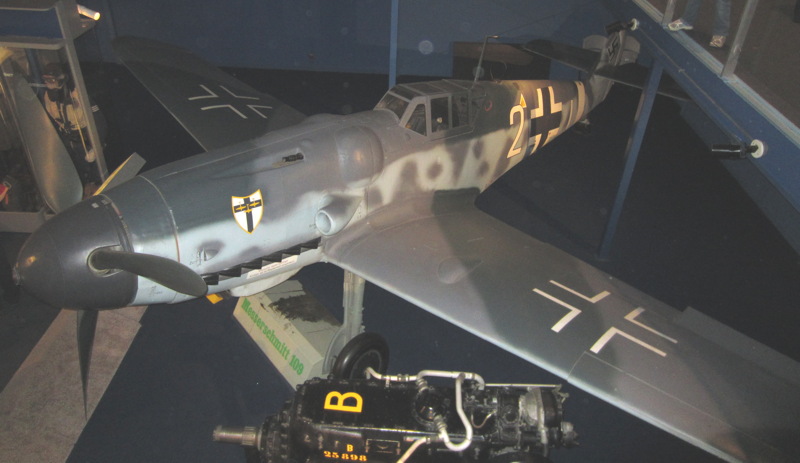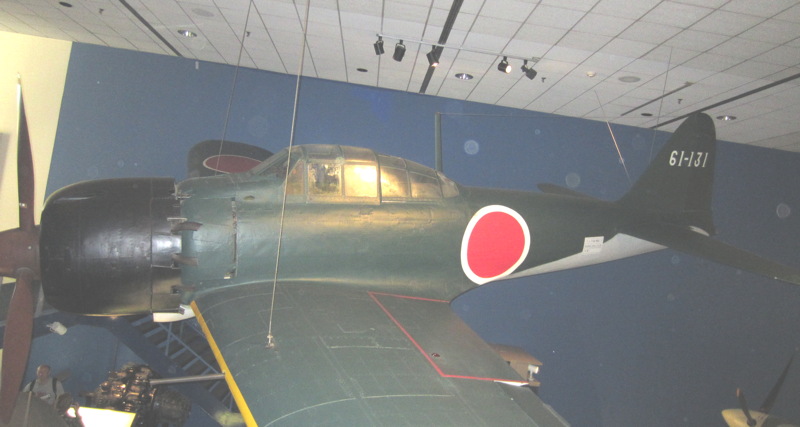Smithsonian Air & Space Museum
Washington DC Building Photos Thumbnails Buildings Home
|
Bell X-1 The Bell X-1 was a rocket engine-powered aircraft, designated originally as the XS-1, and was a joint National Advisory Committee for Aeronautics-U.S. Army Air Forces-U.S. Air Force supersonic research project built by Bell Aircraft. Conceived during 1944 and designed and built in 1945, it achieved a speed of nearly 1,000 miles per hour in 1948. A derivative of this same design, the Bell X-1A, having greater fuel capacity and hence longer rocket burning time, exceeded 1,600 miles per hour in 1954. The X-1, piloted by Chuck Yeager, was the first manned airplane to exceed the speed of sound in level flight and was the first of the X-planes, a series of American experimental rocket planes (and non-rocket planes) designated for testing of new technologies and often kept secret. Nov 2016, Photo 430 |
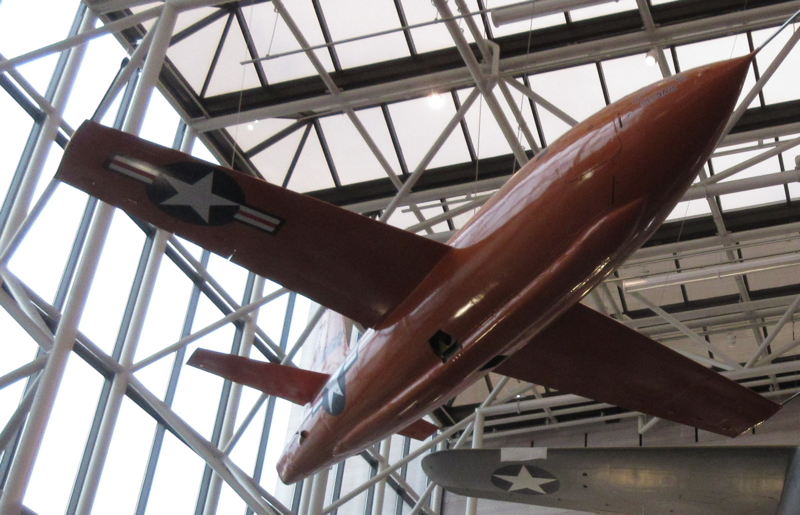
|
|
Bell X-1 Nov 2016, Photo 450 |
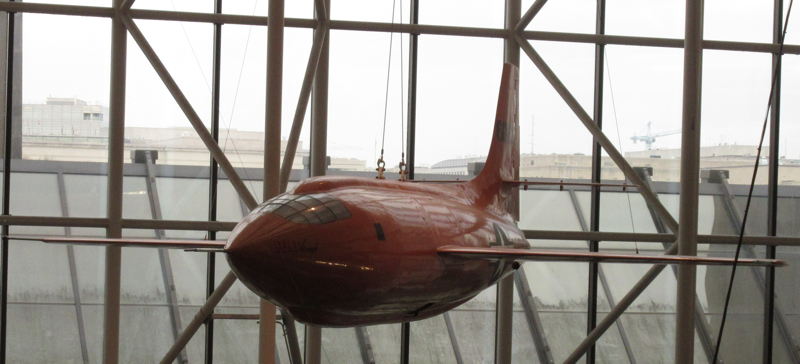
|
|
The Bell P-59 Airacomet A twin jet engined fighter aircraft, the first for the USA, designed and built by Bell Aircraft during World War II. The United States Army Air Forces were not impressed by its performance and cancelled the contract when fewer than half of the aircraft ordered had been produced. Although no P-59s went into combat, it paved the way for another design generation of U.S. turbojet-powered aircraft and was the first turbojet fighter to have its turbojet engine and air inlet nacelles integrated within the main fuselage. Nov 2016, Photo 431 |
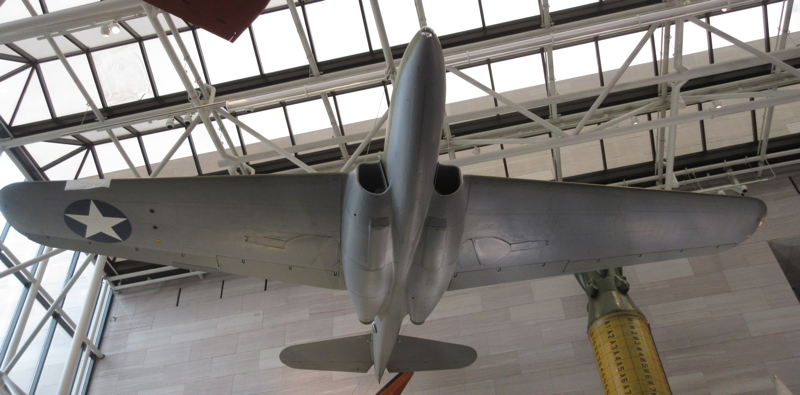
|
|
The Bell P-59 Airacomet Nov 2016, Photo 449 |
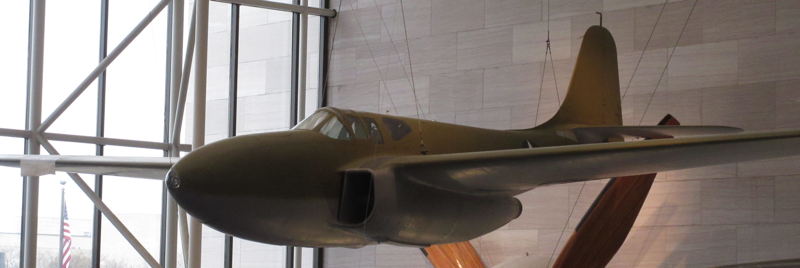
|
|
SS-20 Pioneer and Pershing II Russian and US ballistic missiles, banned by the SALT II treaty. Nov 2016, Photo 432 |
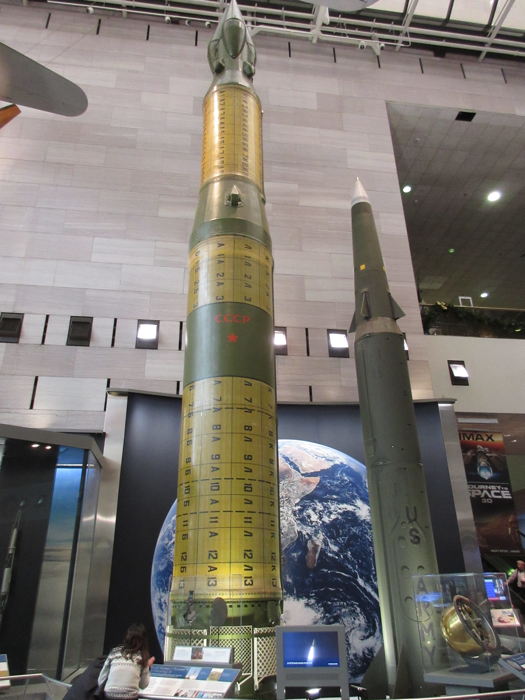
|
|
North American X-15 The North American X-15 was a hypersonic rocket-powered aircraft operated by the USAF and NASA as part of the X-plane series of experimental aircraft. The X-15 set speed and altitude records in the 1960s, reaching the edge of outer space and returning with valuable data used in aircraft and spacecraft design. The X-15's official world record for the highest speed ever recorded by a manned, powered aircraft, set in October 1967 when William J. "Pete" Knight flew at 4,520 miles per hour, or Mach 6.72, and has remained unchallenged as of 2016. During the X-15 program, 13 flights by eight pilots met the Air Force spaceflight criterion by exceeding the altitude of 50 miles (80 km), thus qualifying these pilots as being astronauts. The Air Force pilots qualified for astronaut wings immediately, while the civilian pilots were eventually awarded NASA astronaut wings in 2005, 35 years after the last X-15 flight. Nov 2016, Photo 434 |

|
|
North American X-15 Nov 2016, Photo 448 |
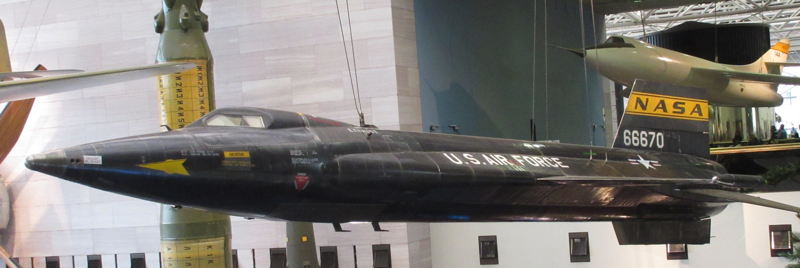
|
|
The Spirit of St. Louis The custom-built, single engine, single-seat monoplane that was flown solo by Charles Lindbergh on May 20–21, 1927, on the first solo non-stop transatlantic flight from Long Island, New York, to Paris, France, for which Lindbergh won the $25,000 Orteig Prize. Lindbergh took off in the Spirit from Roosevelt Airfield, Garden City, New York, and landed 33 hours, 30 minutes later at Aéroport Le Bourget in Paris, France, a distance of approximately 3,600 miles. One of the best known aircraft in the world, the Spirit was built by Ryan Airlines in San Diego, California, which at the time was owned and operated by Benjamin Franklin Mahoney who had purchased it from its founder, T. Claude Ryan, in 1926. Nov 2016, Photo 435 |
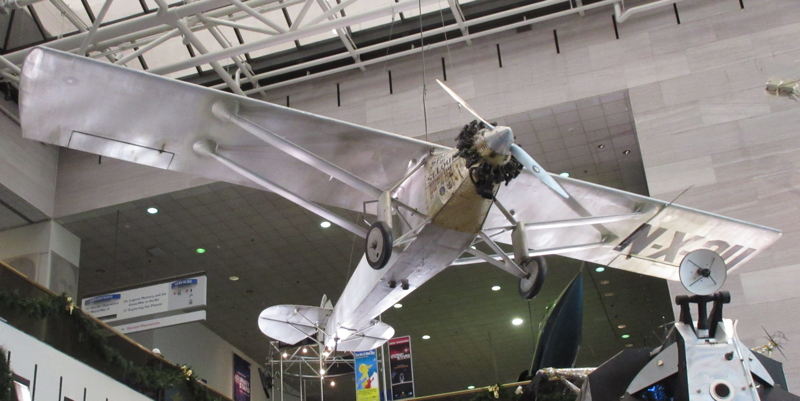
|
|
The Spirit of St. Louis Nov 2016, Photo 446 |

|
|
Viking Lander The Viking mission used two identical spacecraft, each consisting of a lander and an orbiter. Launched on August 20, 1975 from the Kennedy Space Center in Florida, Viking 1 spent nearly a year cruising to Mars, placed an orbiter in operation around the planet, and landed on July, 20 1976 on the Chryse Planitia (Golden Plains). Viking 2 was launched on September 9, 1975 and landed on September 3, 1976. The Viking project's primary mission ended on November 15, 1976, 11 days before Mars's superior conjunction (its passage behind the sun), although the Viking spacecraft continued to operate for six years after first reaching Mars. The last transmission from the planet reached Earth on November 11, 1982. While Viking 1 and 2 were on Mars, this third vehicle was used on Earth to simulate their behavior and to test their responses to radio commands. Earlier, it had been used to demonstrate that the landers could survive the stresses they would encounter during the mission. Nov 2016, Photo 438 |
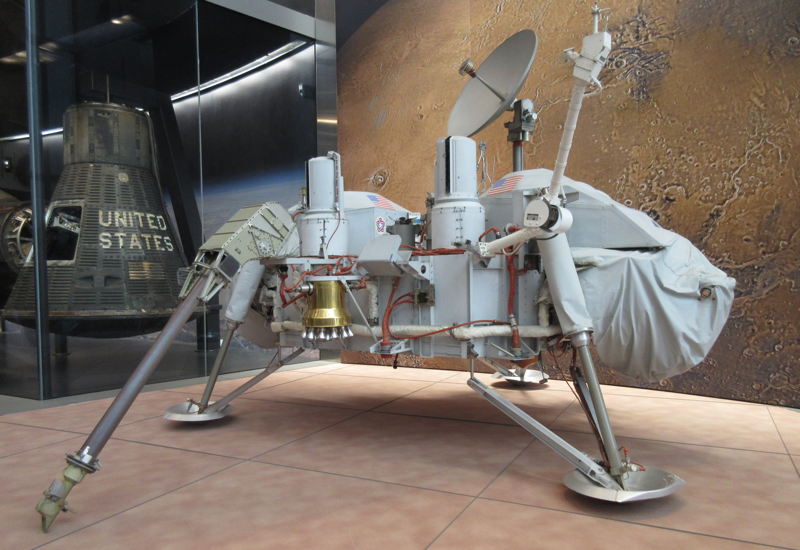
|
|
Viking Lander Nov 2016, Photo 439 |
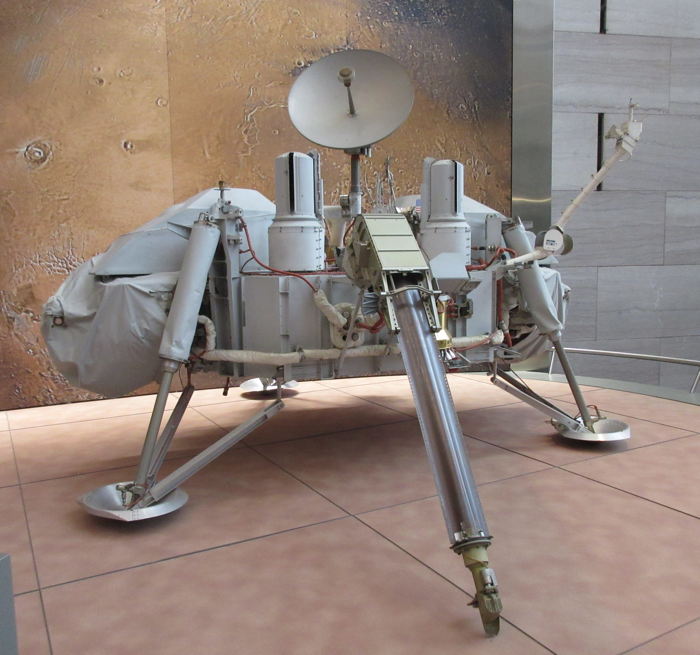
|
|
The Douglas D-558-2 Skyrocket (or D-558-II) was a rocket and jet-powered supersonic research aircraft built by the Douglas Aircraft Company for the United States Navy. On 20 November 1953, shortly before the 50th anniversary of powered flight, Scott Crossfield piloted the Skyrocket to Mach 2, or more than 1,290 mph (2076 km/h), the first time an aircraft had exceeded twice the speed of sound. Nov 2016, Photo 441 |

|
|
Wright Flyer The Wright Flyer (often retrospectively referred to as Flyer I or 1903 Flyer) was the first successful heavier-than-air powered aircraft. It was designed and built by the Wright brothers. They flew it four times on December 17, 1903, near Kill Devil Hills, about four miles south of Kitty Hawk, North Carolina, US. Today, the airplane is exhibited in the National Air and Space Museum. The U.S. Smithsonian Institution describes the aircraft as "the first powered, heavier-than-air machine to achieve controlled, sustained flight with a pilot aboard". The flight of Flyer I marks the beginning of the "pioneer era" of aviation. Nov 2016, Photo 442 |
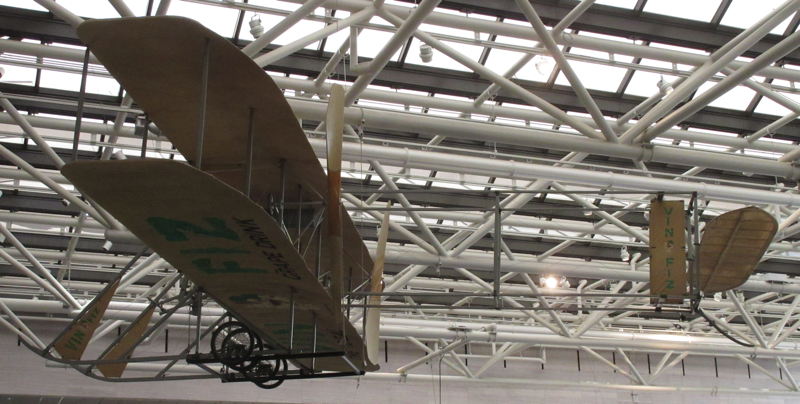
|
|
SpaceShipOne SpaceShipOne is an experimental air-launched rocket-powered aircraft with suborbital flight capability that uses a hybrid rocket motor. The design features a unique "feathering" atmospheric reentry system where the rear half of the wing and the twin tail booms folded upward along a hinge running the length of the wing; this increased drag while remaining stable. SpaceShipOne completed the first manned private spaceflight in 2004. That same year, it won the US$10 million Ansari X Prize and was immediately retired from active service. Its mother ship was named "White Knight". Both craft were developed and flown by Mojave Aerospace Ventures, which was a joint venture between Paul Allen and Scaled Composites, Burt Rutan's aviation company. Nov 2016, Photo 444 |
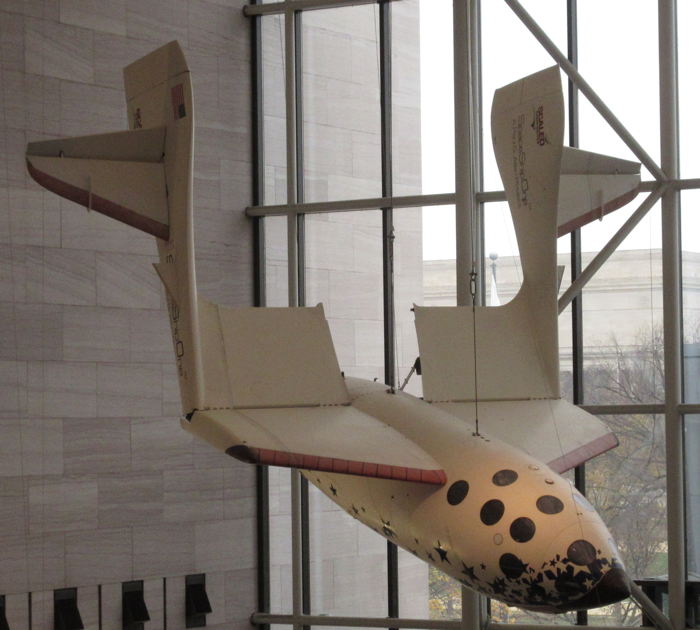
|
|
Apollo Lunar Module The Apollo Lunar Module (LM) was a two-stage vehicle designed by Grumman to ferry two astronauts from lunar orbit to the lunar surface and back. The upper ascent stage consisted of a pressurized crew compartment, equipment areas, and an ascent rocket engine. The lower descent stage had the landing gear and contained the descent rocket engine and lunar surface experiments. LM 2 was built for a second unmanned Earth-orbit test flight. Because the test flight of LM 1, named Apollo 5, was so successful, a second mission was deemed unnecessary. LM-2 was used for ground testing prior to the first successful Moon-landing mission. In 1970 the ascent stage of LM-2 spent several months on display at the "Expo '70" in Osaka, Japan. When it returned to the United States, it was reunited with its descent stage, modified to appear like the Apollo 11 Lunar Module "Eagle," and transferred to the Smithsonian for display. Nov 2016, Photo 447 |
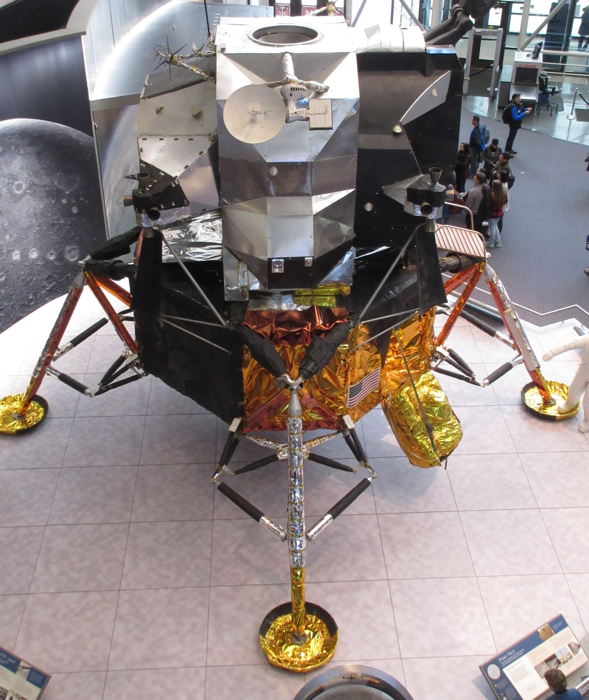
|
|
Douglas World Cruiser "Chicago" The first aerial circumnavigation of the world was conducted in 1924 by a team of aviators of the United States Army Air Service, the precursor of the United States Air Force. The trip took 175 days, covering over 27,553 miles. When the head of Davis-Douglas, Donald Douglas, was asked for information on the Davis-Douglas Cloudster, he instead submitted data on a modified DT-2, a torpedo bomber that Douglas had built for the U.S. Navy in 1921 and 1922. The DT-2 had proven to be a sturdy aircraft that could accommodate interchangeable wheeled and pontoon landing gear. Since the aircraft was an existing model, Douglas stated that a new aircraft, which he named the Douglas World Cruiser (DWC), could be delivered within 45 days after a contract was awarded. The Air Service agreed. Douglas, assisted by Jack Northrop, began to modify a DT-2 to suit the circumnavigation requirements. The main modification involved its fuel capacity. All the internal bomb carrying structures were removed with additional fuel tanks added to the wings and fuselage fuel tanks enlarged in the aircraft. The total fuel capacity went from 115 gallons to 644 gallons. Nov 2016, Photo 452 |

|
|
Curtiss R3C-2 On Oct. 26, 1925, U.S. Army Lt. James H. Doolittle flew the Curtiss R3C-2 to victory in the Schneider Trophy Race with an average speed of 232 mph. The next day he flew the R3C-2 over a straight course at a world-record speed of 246 mph. In the Schneider Trophy Race of Nov. 13, 1926, this same airplane piloted by Lt. Christian F. Schilt, USMC, and piloted by an improved engine, won second place with an average speed of 231 mph. Nov 2016, Photo 453 |

|
|
Northrop 4A Alpha The Northrop Alpha was an American single-engine, all-metal, seven-seat, low-wing monoplane fast mail/passenger transport aircraft used in the 1930s. Design work was done at the Avion Corporation, which in 1929, became the Northrop Aircraft Corporation based in Burbank, California. Nov 2016, Photo 457 |
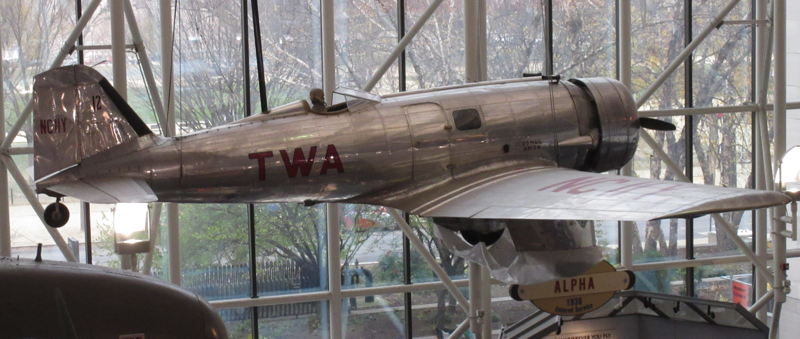
|
|
Smithsonian Air & Space Museum Opened in the bicentennial year of 1976, Air and Space is easily the most popular Smithsonian museum on the Mall. More than 9 million people visit each year and you can easily see why. The museum explores the dramatic story of aviation, from the first fleeting successes to the successful landing on the moon 60 years later. The museum itself is an awe-inspiring space. Photo 105, Nov 2008 |

|
|
Smithsonian Air & Space Museum Photo 416, Nov 2008 |

|
